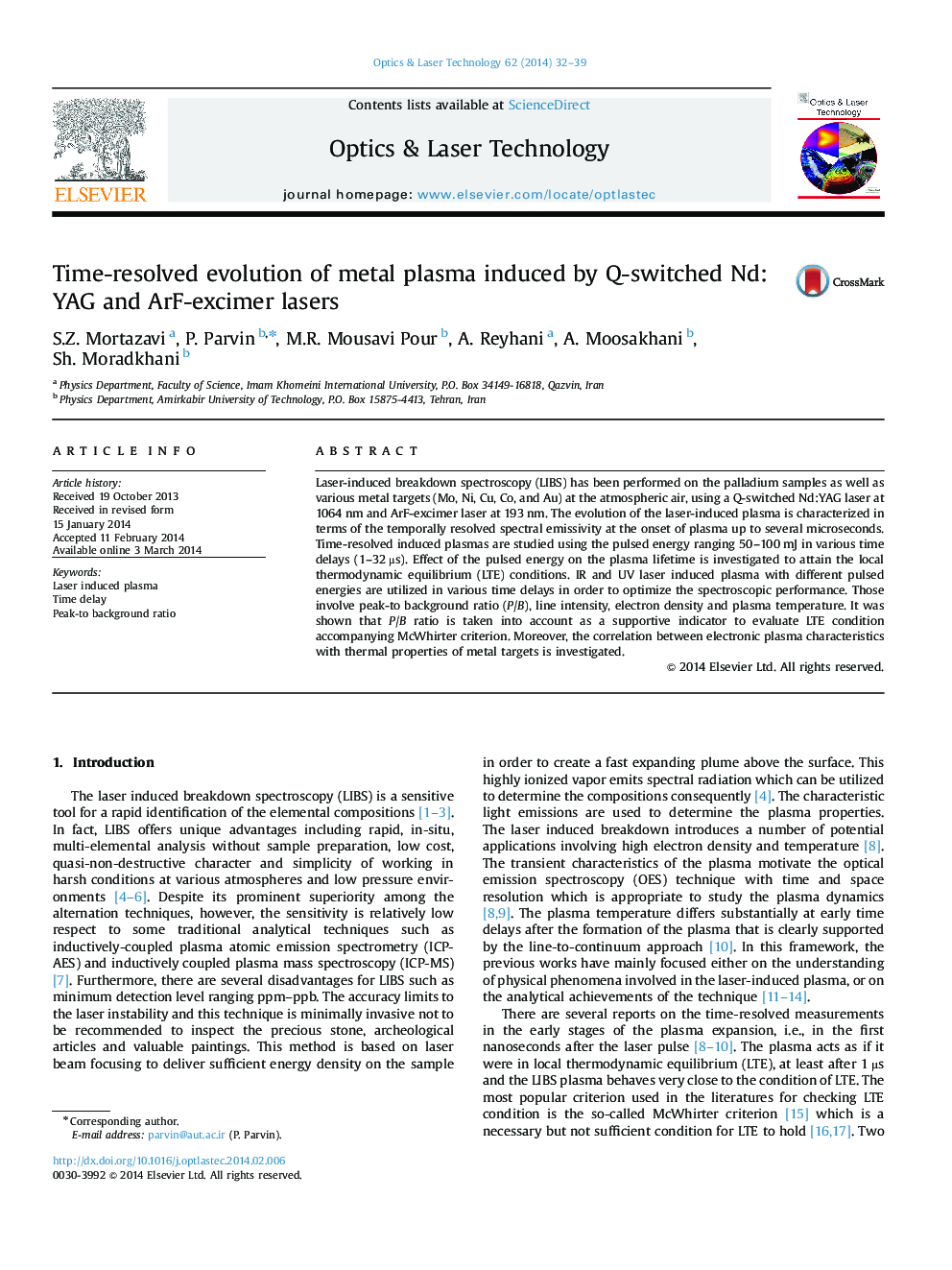| Article ID | Journal | Published Year | Pages | File Type |
|---|---|---|---|---|
| 733533 | Optics & Laser Technology | 2014 | 8 Pages |
•Temporal evolution of IR and UV laser induced plasma on metal targets was studied.•Plasma dynamics were probed by the ratio of peak to background intensity (P/B).•IR laser creates more energetic plasma respect to UV due to inverse Bremsstrahlung.•Plasma temperature is inversely correlated to the ionization energy of metal target.•Electron density is remarkably high for the metals having low threshold fluence for metal evaporation.
Laser-induced breakdown spectroscopy (LIBS) has been performed on the palladium samples as well as various metal targets (Mo, Ni, Cu, Co, and Au) at the atmospheric air, using a Q-switched Nd:YAG laser at 1064 nm and ArF-excimer laser at 193 nm. The evolution of the laser-induced plasma is characterized in terms of the temporally resolved spectral emissivity at the onset of plasma up to several microseconds. Time-resolved induced plasmas are studied using the pulsed energy ranging 50–100 mJ in various time delays (1–32 μs). Effect of the pulsed energy on the plasma lifetime is investigated to attain the local thermodynamic equilibrium (LTE) conditions. IR and UV laser induced plasma with different pulsed energies are utilized in various time delays in order to optimize the spectroscopic performance. Those involve peak-to background ratio (P/B), line intensity, electron density and plasma temperature. It was shown that P/B ratio is taken into account as a supportive indicator to evaluate LTE condition accompanying McWhirter criterion. Moreover, the correlation between electronic plasma characteristics with thermal properties of metal targets is investigated.
